How to properly starch the fabric?

Despite the huge number of various fabric care products on the market today, classic starch does not give up its positions. The procedure, easily carried out at home, makes things more durable, and in general, makes their appearance more aesthetic.
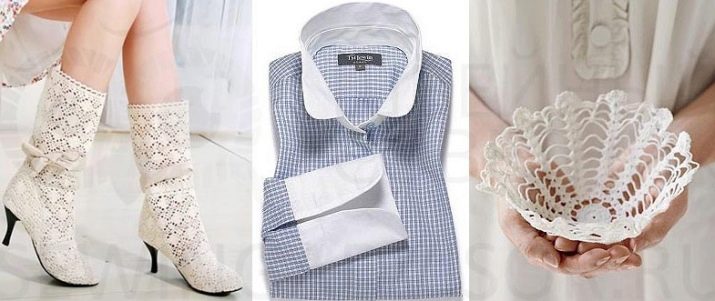
The need for a procedure
Starching clothes and home textiles is not an obligatory procedure today, but many women still devote enough time to this stage. During processing, the solution fills the smallest gaps between the fabric fibers and forms a protective film. As a result, the characteristics of the fabric change for the better. The canvas becomes denser and stronger, which increases its service life. Clothes are less wrinkled and do not stretch, and they also retain their shape better.
An indisputable advantage is the fact that if you starch the fabric, it starts to get dirty less, since the paste film protects the fibers from dirt. In the future, it remains only to dissolve the protective layer in water and get a clean thing.
We can say that starch acts to some extent as a bleach and freshener.

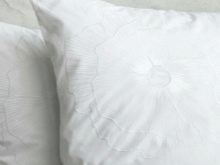
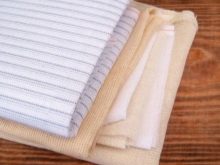
However, it should be remembered that in some cases, using starch can even hurt. After exposure to the paste, the air permeability of the materials decreases to almost zero, so the procedure should not be carried out for underwear and clothes that come in contact with human skin, and sometimes for sheets with pillowcases and duvet covers.The body, interacting with such a clogged tissue, rather quickly begins to swell and become covered with a rash, sometimes even an allergy occurs. In addition, tough items of starched clothing can chafe the skin.
It makes no sense to starch synthetic products, since the substance is not fixed on artificial fibers. Processing not only will not give a worthwhile result, but may even ruin the thing. Do not expose dark fabrics to paste, as cloudy streaks may remain on them. It is also not recommended to starch summer open clothes: they will become too dense for the hot season. You should not subject the procedure to embroidery made of floss, the threads of which will stick together due to polysaccharides and will look sloppy.
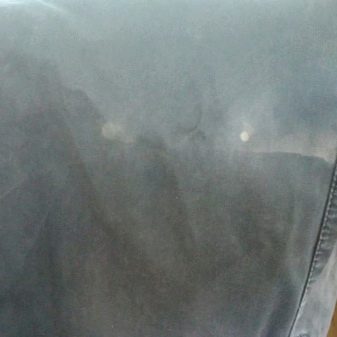
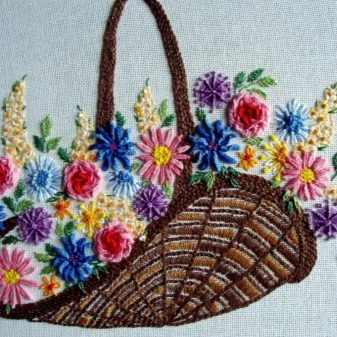
The ways
The main methods of starching clothes differ in the concentration of the drug used for the procedure. Besides, the choice is offered between potato, corn and rice starch.
Soft
If you dilute a weak starch solution, then with its help it will turn out to slightly whiten the product. In addition, it will become more elastic and less wrinkled. The soft method is usually used for men's shirts and women's blouses, children's suits for going out, decorative textiles and medical gowns. Sometimes such a mixture allows you to preserve the color of colored products, but only if they do not fade. To prepare the solution, combine 1 teaspoon of starch and 1 liter of water. In general, about 5 liters of mixture have to be prepared to process several jackets.
Cooking begins with the fact that a glass of water is warmed up to about +30 degrees. Its contents are poured into starch, and everything is thoroughly mixed so that there are no lumps left. The required volume of water is brought to a boil, after which the starchy substance is poured into it. Everything is stirred again, removed from the heat and left to cool naturally. When the liquid reaches a comfortable temperature, you will need to lower things into it for about 2-5 minutes. The processed products are straightened and hung on a hanger.
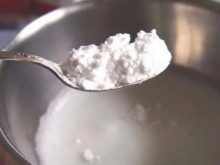
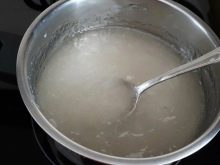
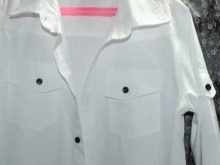
Medium hardness
To get a solution of medium hardness, you need to combine 1 tablespoon of starch and 1 liter of water. The resulting mixture is suitable for tidying up aprons, tablecloths, cook's and medical gowns, as well as curtains and furniture covers. To prepare the mixture, all the starch is first diluted in 0.5 liters of liquid. The remaining water is brought to a boil, and the starch mixture is already poured into it. Things are immersed in the cooled solution for about 20 minutes.
If the clothes need to give extra shine, then it is recommended to add 1 teaspoon of table salt to the composition.
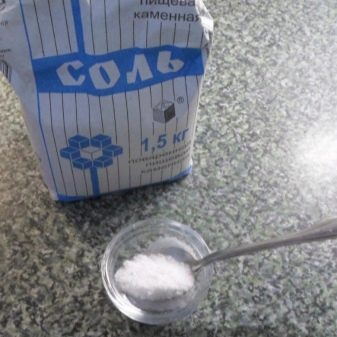
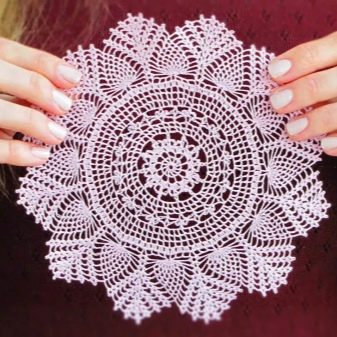
Hard
It is customary to starch the cuffs and collars of shirts, as well as tulle petticoats, chef's hats and artificial flowers made of fabric. In this case, the solution is prepared from 2 tablespoons of starch and a liter of water. Optionally, the composition is supplemented with 1 teaspoon of borax. The concentrated mixture is prepared according to a well-defined system. First, 500 milliliters of water are heated to + 20-25 degrees and used to dilute starch.
Next, 250 milliliters of liquid are warmed up to +40 degrees and are used to dilute the borax. The remaining 250 milliliters are brought to a boil and combined with the previous components. Everything is thoroughly mixed and left for 2 hours. After the above time, things are soaked in the solution for 30-40 minutes. The processed products are gently wrung out, straightened and dried. It should be clarified that such a highly concentrated solution may be applied with a wide brush or poured into the machine compartment for the conditioner.

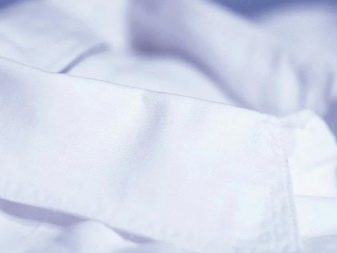
How can you starch without starch?
At home, it is possible to quickly carry out the starching procedure with the help of improvised means.
Special means
The easiest way to starch clothes and textiles with ready-made products, as they are usually sold in a convenient spray format. To use, you only have to shake the bottle and spray its contents from a distance of about 20 centimeters. Immediately after processing, it is allowed to iron the thing, since such a spray will not only eliminate creases, but also significantly simplify the ironing process. For example, suitable for work is Luxus, designed for too dry things, universal Citico, suitable for all fabrics, Reinex, which can be used for bed linen, and Domal, simply added to the washing machine.
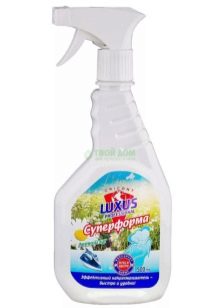

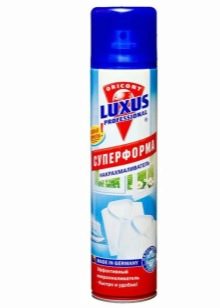
Traditional methods
You can add density to things by using sugar. Sand in the amount of 3 tablespoons is combined with 100 milliliters of water, after which it is heated over a fire until a sugar syrup is obtained. The finished substance is cooled naturally, and the processed items are placed directly into it for 10 minutes. After removal, the products are given the required shape, and they are necessarily protected from moisture.
It should be mentioned that an alternative recipe involves dissolving 6 tablespoons of sugar in a liter of water, as well as a twenty minute soak. The product starched in this way is dried after light squeezing on a flat surface, and is also ironed through cheesecloth.
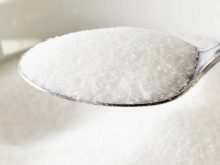
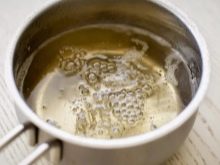
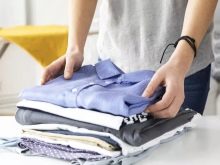
PVA glue is allowed to be used both for knitted clothes and for things decorated with embroidery. A sticky substance in the amount of a couple of tablespoons is diluted in 4 tablespoons of water. If you need to achieve greater rigidity of things, then it is allowed to combine the components in a 1: 1 ratio. Everything is gently mixed and applied with a brush to the processed pieces of clothing, or it is used to soak products. For starching silk clothes, silicate glue is more suitable, a teaspoon of which will need to be diluted in 5 liters of water.
The use of gelatin significantly increases the elasticity of fabric products. This method is suitable for knitted items, colored fabrics, artificial flowers and various decor. To prepare the solution, use from 1 teaspoon to 1 tablespoon of powder and 50 milliliters of cold liquid. After waiting for the mixture to swell, which will take from 20 minutes to an hour, you need to add another 0.2 liters of pure water to it, and then put on fire and warm, stirring, until the grains are completely dissolved. In the resulting solution, it will be correct to soak objects for no more than a few seconds.
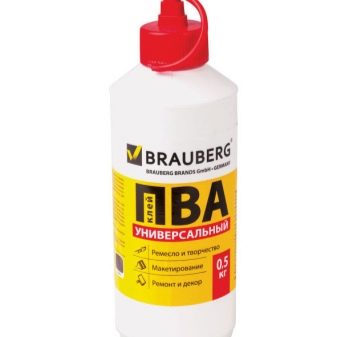

Starching of different types of fabrics
It is customary to starch different materials according to the same scheme, but with some nuances. For example, gauze is dipped into not completely cooled, but still warm paste. After completely saturating the fabric, you need to gently straighten it. If you leave the slightest bend on the canvas, it will not be possible to smooth it in the future, even with an iron. Tulle, chiffon and other similar fabrics can only be processed in a soft way. The thing is soaked in the solution for 15 minutes, and all this time it is periodically stirred for a more even impregnation.
Some experts, however, limit themselves to a two- or three-second processing. The product is wrung out without twisting, after which it is straightened and dried. Before ironing, the treated fabric is sprayed so that it is saturated with moisture.
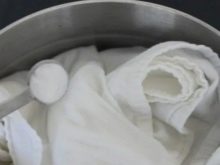
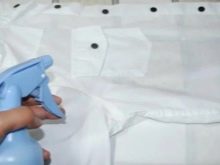

For lace products, medium starch is more suitable. They also respond well to medium concentration adhesive solutions or a mixture of rice starch and milk. It is not necessary to increase the concentration to increase the firmness of the napkin or tablecloth. It is enough to squeeze out the thing to a lesser extent, thereby leaving more paste on it. Lace processing is carried out using a cotton pad. It is he who is impregnated with an adhesive, and then used to process the wrong side of the product.Ironing a starched thing is to be done through a protective fabric.
It is enough to process cotton products in a soft way. They are lowered into the composition for several minutes, after even soaking, they are wrung out and, being straightened, are hung on the crossbar. Before ironing the thing, it will need to be processed from the spray bottle. Organza is treated with a super soft solution of 0.5 teaspoon of starch and 1 liter of water, and is also necessarily exposed to gelatin.











